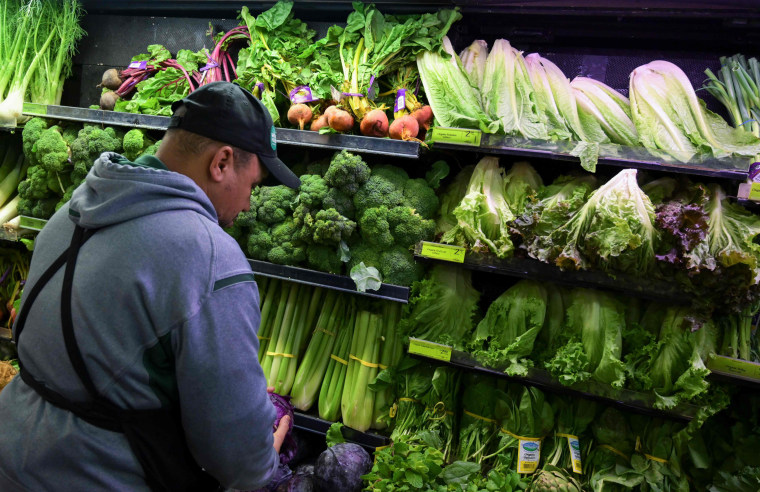An outbreak of E. coli infections linked to romaine lettuce has been traced to at least one California farm, but it’s probably not the source of all the sicknesses, federal health officials said Thursday.
So far, 59 people have been reported sick across 15 states in the outbreak, the Centers for Disease Control and Prevention said. The CDC said 23 have been sick enough to be hospitalized, although no one has died. Canadian health officials have reported 27 cases linked to the same outbreak.
Investigators found the implicated strain of E. coli bacteria in the sediment of an irrigation reservoir on a farm in Santa Barbara county on California’s central coast. The farm, Adam Brothers Family Farm, has stopped shipping romaine and is helping with the investigation, the CDC and the Food and Drug Administration said.
But all of the illnesses could not be traced to this farm, so contamination is likely coming from somewhere else as well, officials told reporters.
“What we are seeing is there are multiple distributors and multiple processors and multiple farms that show up in the various legs of that traceback and they don’t all lead back specifically to this farm,” said Dr. Stephen Ostroff, senior adviser to the FDA commissioner.
“We are not in position to conclude that this the only location that may have been involved in the outbreak.”
The current outbreak started in October and, at first, the FDA and CDC told people not to eat any romaine lettuce at all. Late last month, the agencies said romaine from six California countries was suspect. Now, just three counties are implicated: Monterey; San Benito; and Santa Barbara.
Is E. coli outbreak over?
All other sources of romaine lettuce are likely safe, the agencies said.
"Romaine lettuce entering the market will now be voluntarily labeled with a harvest location and a harvest date or labeled as being hydroponically- or greenhouse-grown. If it does not have this information, you should not eat or use it," the FDA said.
It’s too soon to say the outbreak is over, the agencies said. It can take days or weeks for sick people to be diagnosed and reported.
"As of Dec. 13, our investigation yielded records from five restaurants in four different states that have identified 11 different distributors, nine different growers, and eight different farms as potential sources of contaminated romaine lettuce," FDA Commissioner Dr. Scott Gottlieb said in a statement.
"Currently, no single establishment is in common across the investigated supply chains. This indicates that although we have identified a positive sample from one farm to date, the outbreak may not be explained by a single farm, grower, harvester, or distributor."
The CDC and FDA use genetic fingerprinting to link samples from sick people to samples of food they may still have in their homes, and to compare to samples taken at farms, processing centers, distributors and retailers.
It’s not clear how E. coli got into the reservoir at the farm, Ostroff said. E. coli bacteria are very common and the 0157:H7 strain that makes people sick is found in the digestive tracts of cattle, sheep, deer and other ruminant animals. It gets into manure and can be found in both soil and water.
“One potential route is from wild animal intrusion,” Ostroff said. Manure or other material used to amend soil is another possible source. The Adam Brothers farm focuses on produce, not on domestic animals for slaughter.
“Obviously, based on this finding, we will be doing a much more thorough investigation,” Ostroff said.
A separate outbreak of E. coli in romaine lettuce last spring was traced to contaminated irrigation canal water that affected several farms in Yuma, Arizona. People sick in the current outbreak have been infected with E. coli that is genetically very close to bacteria that caused an outbreak linked to salad greens last winter.
Foodborne illnesses are very common. The CDC estimates that 48 million Americans get sick from a foodborne illness every year. Of them, 128,000 are hospitalized, and 3,000 die. the CDC and FDA say they are also checking into why romaine lettuce is so heavily affected by recent outbreaks, even when it comes from farms that grow other greens alongside it.



